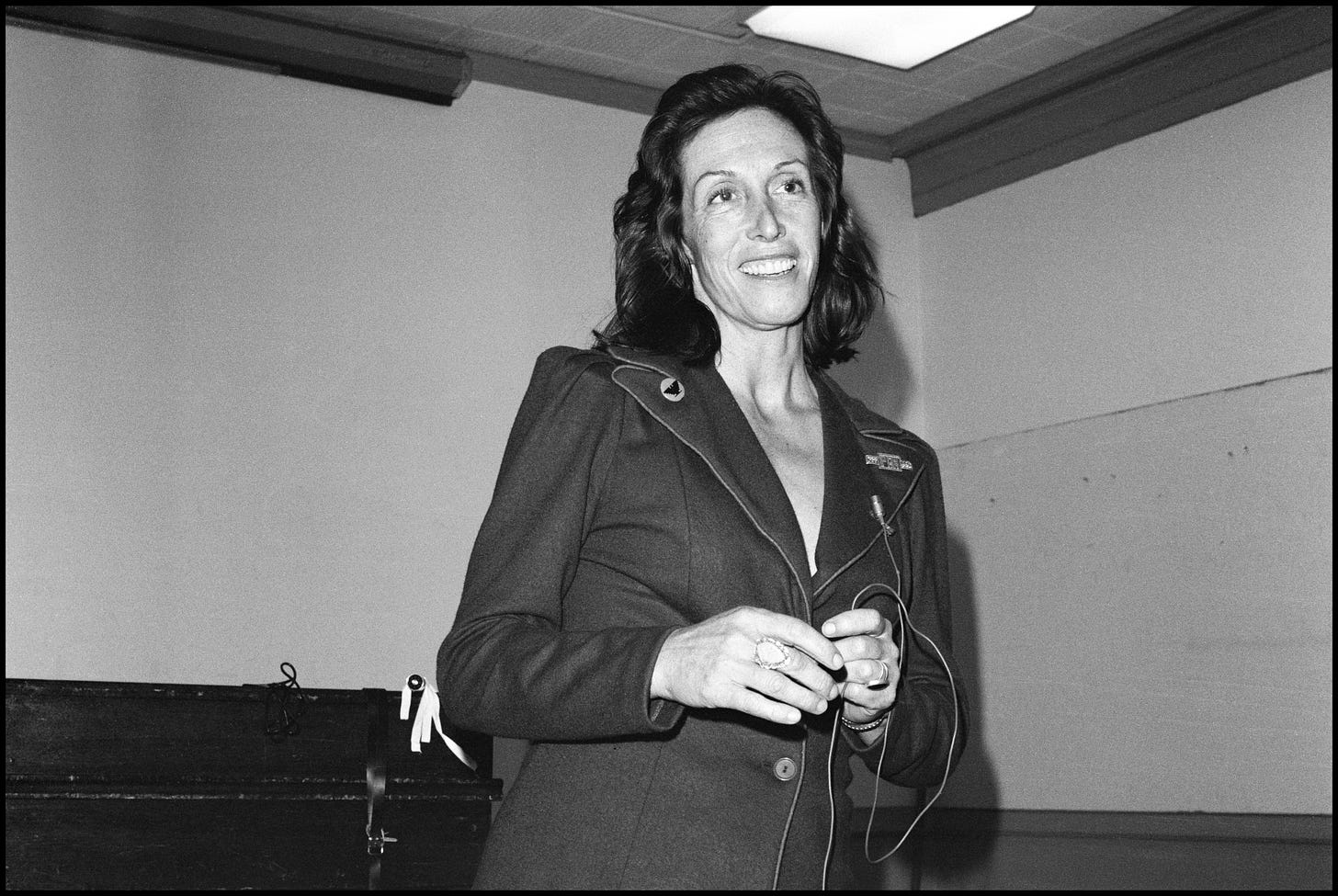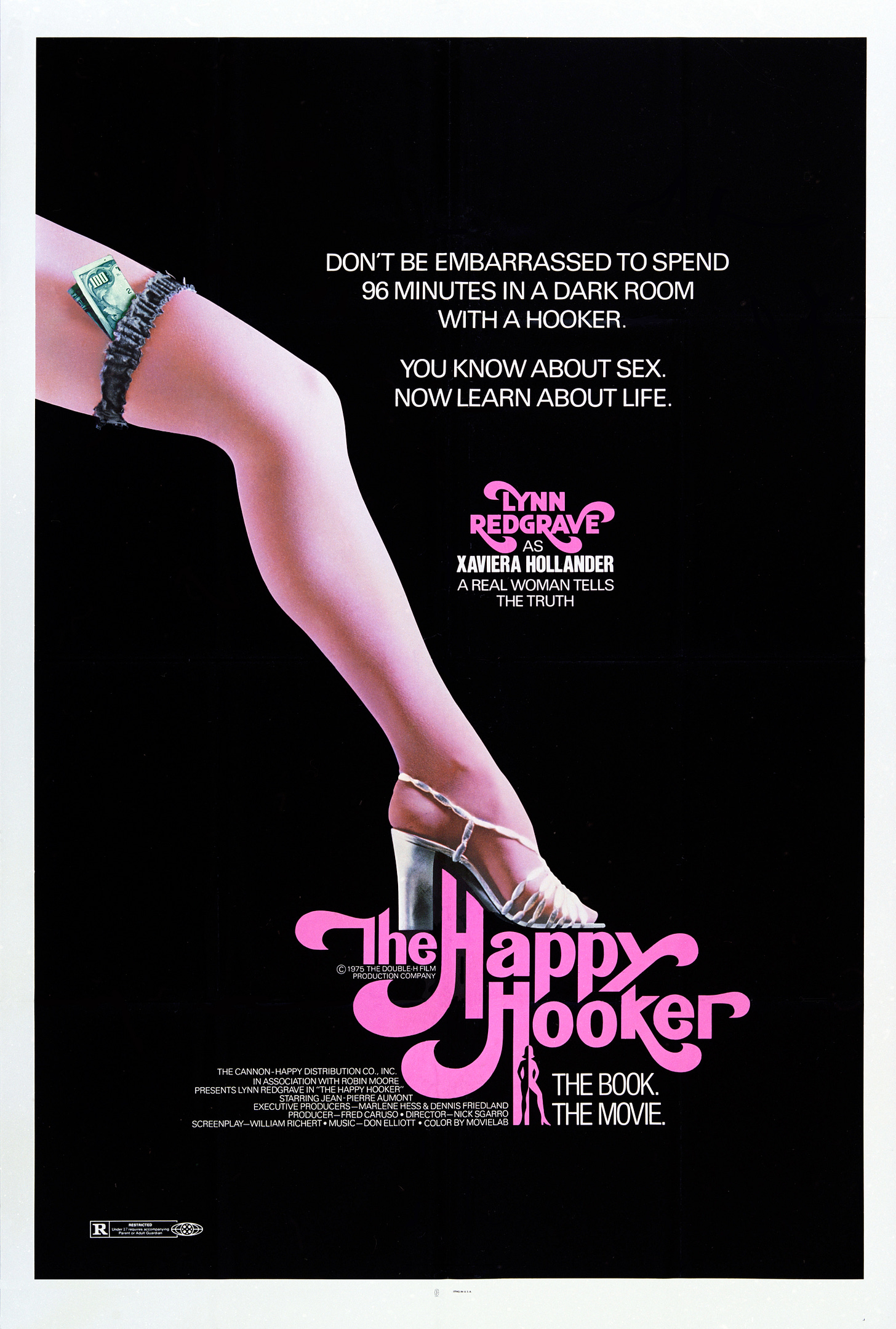If 'sex' is 'work', then rape is merely theft
When did the 'sex worker's rights' movement emerge, and who was behind it? An extract from my book, The Pimping of Prostitution: Abolishing the Sex Work Myth (2017)
The term "sex work" was coined in the early 1980s by Carol Leigh and was popularised by a 1987 anthology of the same name. However, the emergence of the ‘sex workers’ rights’ (SWR) movement in Europe began as a response to police violence and corruption towards women in prostitution. In the early days the movement was based on socialist principles, which we have seen a recent return to.
As she describes in The Prostitution Papers, in 1971 the feminist icon Kate Millett was at a women’s liberation movement conference at which some SWR activists became very angry with the feminists there. They became particularly enraged when a panel entitled ‘Towards the Elimination of Prostitution‘ was organised including ’everyone but prostitutes’.
Things rapidly degenerated into chaos. Prostitutes had gathered their still-nebulous rage against their own lives and summarily redirected it towards movement women who appeared to be summarily “eliminating” prostitution: the means of their livelihood. The argument became so heated that a physical fight broke out.
Kate Millett
In the mid 1970s, Helen Buckingham promoted herself as the main spokesperson for women in the sex trade in Britain. Buckingham described herself as a ‘high priced escort’ and claimed to have a number of regular, wealthy punters. In 1975 Buckingham was declared bankrupt by the Inland Revenue, which demanded tax from her earnings in prostitution. Buckingham argued that if she was required to pay tax, she must be allowed to work legally. Buckingham founded a group PUSSI (Prostitutes United for Social Integration) which later changed to PLAN (Prostitution Laws are Non-sense) and allied herself to Selma James, founder of the International Wages for Housework Campaign, which demands money from the State for women’s unwaged work in the home. Together they founded the English Collective of Prostitutes in 1975.
In the early days, the ECP were abolitionists. The aims and objectives of James and her colleagues were clear: women should be paid for all labour, including housework and sex. ‘For prostitutes, Against prostitution’ was its mantra. The ECP positioned itself as part of the working class movement for more money and less work. They referred to the introduction of the kerb crawling law as ’the new suss law’ (‘suss’ is the abbreviation for a stop and search law in England and Wales that permitted a police officer to stop, search and potentially arrest people on suspicion of having committed a crime. Black men are disproportionately targeted under suss).
The prostitutes’ rights movement in Europe was launched in Lyon, France, in 1975, when French prostitutes occupied a church in protest at the way in which they were treated by the police. The strike protested against the savage police repression and corruption in Lyon, which had been experiencing a wave of brutal murders of prostitutes.
Margaret Valentino and Mavis Johnson of the ECP provide an introduction to the volume of life stories of French women involved in the strike, and an analysis setting out the ECP position. They explained that: “Prostitution was one way women had been fighting to get paid for housework - by getting paid for all the sexual services all women are always expected to give for free” . The cause of prostitution was “poverty and women’s refusal of poverty”, and “the end of women’s poverty is the end of prostitution”. The ECP approach was abolitionist rather than celebratory. Rather than arguing that ‘sex work’ is empowering or even enjoyable, the ECP saw it as exploitation, the same as they did for all labour under capitalism. The ECP recognised that selling sex was not liberating for women.
The ECP led ‘sex strike’, London, 2019
COYOTE was founded out of WHO (Whores, Housewives and Others) in 1973 by Margo St James, who described herself as an ex-prostitute. St James was given money by the Point Foundation at Glide Memorial Church, and later $1,000 dollars from the Playboy Foundation.
Hugh Hefner
St James recruited 50 high-profile individuals to form the COYOTE advisory board, as well as prostituted women to campaign for decriminalisation. Interested parties, including students, sex buyers, politicians, media personnel, activists and representatives from other advocacy organisations were invited and encouraged to become members of COYOTE.
In 1976, COYOTE filed a lawsuit against Rhode Island. In the case of COYOTE v Roberts, the argument was based on how much power the state should have to control the sexual activity of its citizens. The lawsuit also alleged discrimination on how the law was being applied. Data was submitted that demonstrated selective prosecution as the Providence Police were arresting female sex workers far more often than the male customers. St James testified in the case. Although the case eventually was dismissed when the General Assembly changed the prostitution statute in 1980, COYOTE and St James are given credit as one of the reasons prostitution in Rhode Island was decriminalised.
St James also attended international conferences: the United Nations Decade Face of Women Conferences in Mexico City, the 1976 Tribunal of Crimes Against Women in Brussels, the 1977 International Women's Year Conference in Houston, the 1977 Libertarian Party Convention, the 1980 Decade of Women Conference in Copenhagen, the 1976 Democratic National Convention in New York - where St James organised loiter-ins - and the Republican Convention in Kansas City. In 1974, St James lectured at Harvard among other campuses.
As Valerie Jennes writes in her book on COYOTE , “As one newspaper stated, ‘It was something between the 1906 earthquake and fire, and the opening of the opera’ . The Chicago Tribune reported: “For the press it was an orgy. They filmed, photographed and interviewed anyone who was generous with her eyeshadow” . More locally, the San Francisco Chronicle described the events as “wild masquerades that drew the kind of people who really knew how to party [and that became] legendary, even though they only lasted a few years” . The tide was turning from politics to glamour and lifestyle.
Unsurprisingly, COYOTE soon began to be lauded by the liberal male elite. Feminism remained popular among this group of liberal men. Jennes records that in the first year of COYOTE’S existence, the Seattle Post Intelligencer reported that “Margo is ‘in’ socially this year. Well-to-do liberals invite her to things and seek her company”.
Margot St James
Fundraising involved an annual hosting of the well-attended Hookers’ Ball, which nabbed 20,000 attendees in 1978. Cherie Jimenez, who describes herself as a survivor abolitionist, remembers the annual event.
“For several years I remember doing the so called Hookers’ Ball,” Jimenez told me. “A costume party at a club in Cambridge that was also raising money for PUMA (Prostitute's Union of Massachusetts). There was a bail fund for women, I do remember that. But here is the thing, I still know some of these women, and we continue to argue our positions, and keep in mind it was a small group of white women. However, it was started by some man I never remember meeting, that several of these women had college degrees, they had options but liked the money etc.”
The movement had become less about workers’ rights, and more about ‘happy hookers’.
Former ‘sex worker’ Xaviera Hollander claims credit for coining the term ‘happy hooker’, although it is likely it was thought up by Robin Moore, who co-authored the bestselling book of the same name about Hollander’s life. It is telling that Moore and Hollander chose between two possible book titles before setting on Happy Hooker: the alternative was Happy Madame. The book went on to be an international bestseller, was adapted into a 1975 film starring Lynn Redgrave, and has also been performed as a play and an opera.
Despite the influence of Happy Hooker on popular culture, it is now clear that it was composed almost as a piece of fiction, with two ghost writers orchestrating the account of Hollander’s life in the sex trade. They could not even decide if this was about a pimp or a ‘hooker’. “[Moore] actually hired Yvonne Dunleavy who was a famous journalist at the time. She was the one who wrote the book. They taped me, simply asking [me] questions about my life and had the chapters spewed out in three months,” Hollander told me. “She wrote it, he edited it. He tried in vain to write a chapter, it was a piece of shit.”
When I asked Hollander how long she had sold sex for before living off the earnings of other women, she answered: “It went together. I was a physical hooker for about half a year to learn the trade. I went from an L shaped apartment to a five-bedroom penthouse apartment in rocket time.”









As always, I'm appalled at the betrayal of women by women. As if it isn't hard enough living in patriarchy. Of course, that's by design. Those in power can only be in power because women are so divided. Getting half the human species to agree on their plight and fight back is a monumental task. Especially when women are hard-wired to mate, bear and raise children with their oppressors. No other demographic is required to do that.
'If sex is work, then rape is merely theft' is like saying 'if labour is work, then slavery is merely theft'.